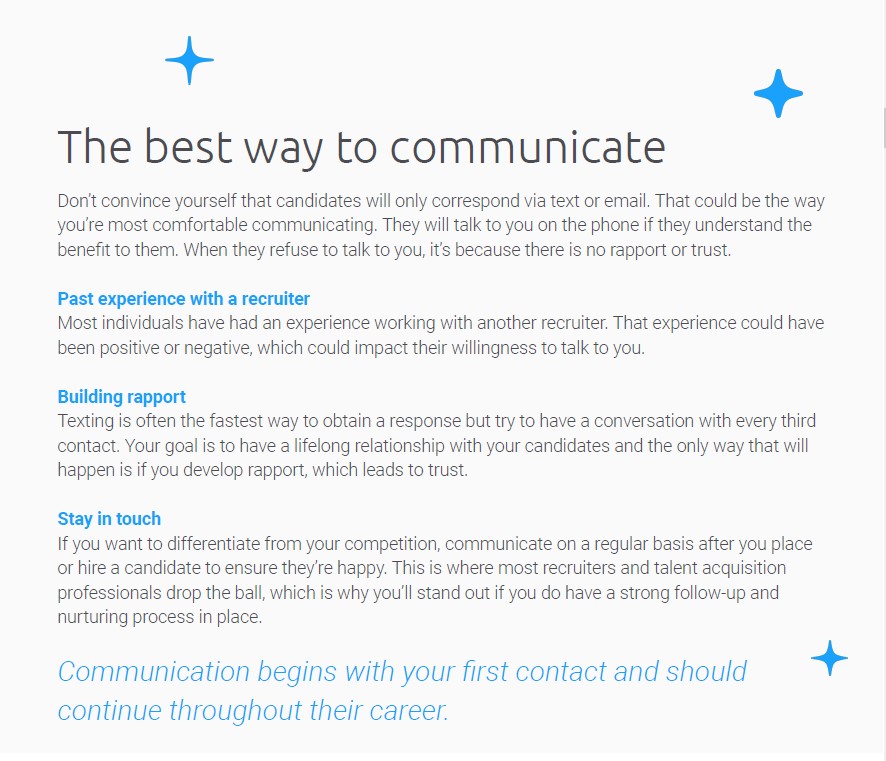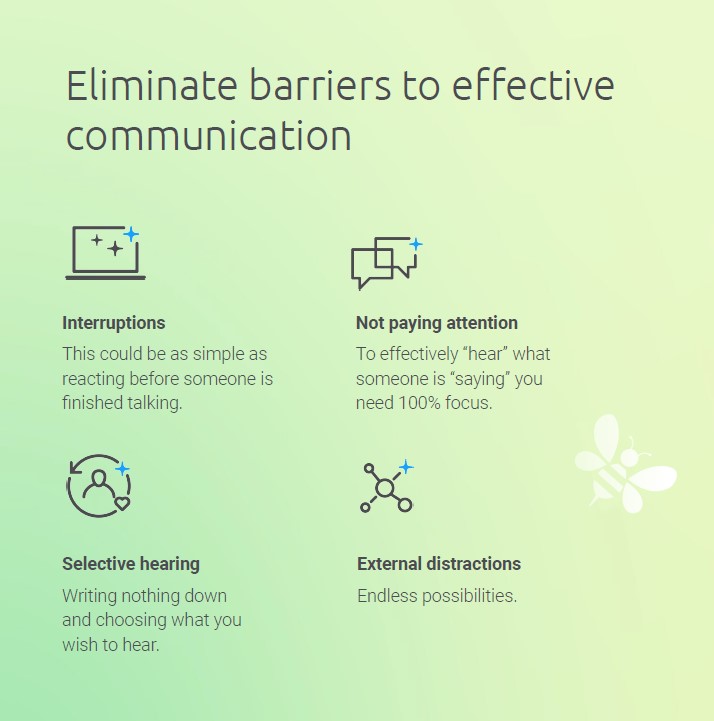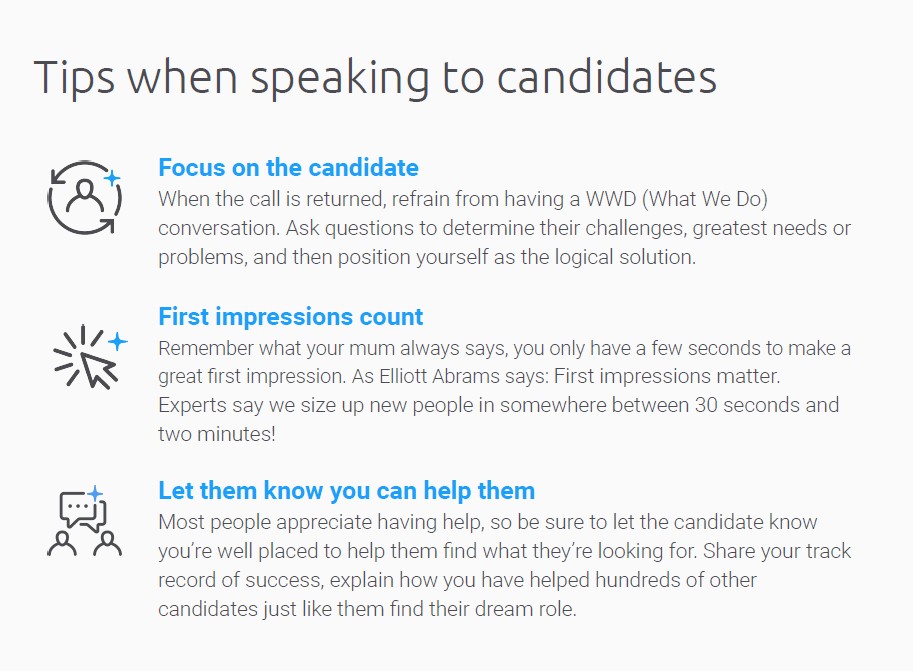
Why do candidates ignore your calls?
JobAdder launched a guide to discover how to improve our communication to engage more candidates, especially the passive one.
Currently, candidates feel like a number, they’re convinced you care more about filling an open job than what’s most important to them. Your verbal and written communication can really change the opportunity of success; it can be ignored based on what you say or write.
Barbara Bruno, one of the top experts in the recruiting and talent acquisition space, suggest to “Build trust and engagement with candidates by sending them a birthday card, work anniversary card or thank you note in the mail. That shows your candidates that you cared enough to take the time to write something down vs. sending a quick email.”

Do’s and don’ts of recruiting:
DO
1. The more successful you are at addressing the WIIFM (What’s In It For Me) issue, the more successful you’ll become with your recruiting efforts.
2. Always remember that your prospective candidates don’t care about your opinions. It’s all about them and they appreciate you sticking to facts and again, what’s important to them.
DON’T
1. Pitch a specific opportunity.
2. Seem to care more about your company or clients’ companies than your candidates.
3. Sell before you know what’s important to each candidate.
Why is so important active listening?
Active listening is a fundamental skill in recruitment, allowing professionals to truly understand the needs and expectations of both clients and candidates. By actively listening to the nuances of each conversation, recruiters can uncover crucial insights that may not be immediately apparent. This level of understanding is essential for building strong relationships, managing expectations, and ultimately making the best possible matches between employers and job seekers. Without active listening, recruiters risk missing out on important details and failing to fully comprehend the needs of their clients and candidates.


Here are some strategies to enhance your chances of getting a response:
- Craft a Compelling Subject Line: The subject line is the first thing candidates see. Make it compelling, concise, and relevant to grab their attention. Avoid generic or overly formal language.
- Personalize Your Outreach: Tailor your message to each candidate's background and experiences. Reference specific details from their profile, such as skills or achievements, to demonstrate that you've done your homework.
- Highlight Mutual Interests: Identify commonalities or shared interests between you and the candidate. Whether it's a professional group, a project they worked on, or a common connection, emphasizing shared interests can make your outreach more relatable.
- Showcase Company Culture: Briefly highlight your company's culture and values. Quality candidates often look beyond job descriptions and consider the workplace environment. If your company has a positive culture, emphasize it in your message.
- Provide Value Proposition: Clearly articulate the value proposition of the opportunity you're presenting. Explain how the role aligns with the candidate's skills, career goals, and aspirations. Focus on what makes your company an attractive place to work.
- Use a Conversational Tone: Write in a friendly and conversational tone rather than a formal one. Avoid jargon and complex language. Candidates are more likely to respond to messages that feel approachable.
- Include a Call-to-Action (CTA): Clearly state the next steps or actions you'd like the candidate to take. Whether it's scheduling a call, providing more information, or expressing interest, a clear CTA guides the candidate on the next steps.
- Follow Up Strategically: If you don't receive a response, follow up strategically. Acknowledge that people are busy, express continued interest, and perhaps provide additional information or insights about the opportunity.
- Utilize Multiple Channels: Consider reaching out through multiple channels, such as email, LinkedIn, or even a personalized video message. Using diverse communication methods increases the chances of getting noticed.
- Build a Genuine Connection: Establish a genuine connection by expressing your sincere interest in the candidate. Share why you believe they would be a great fit and how their skills align with the role.